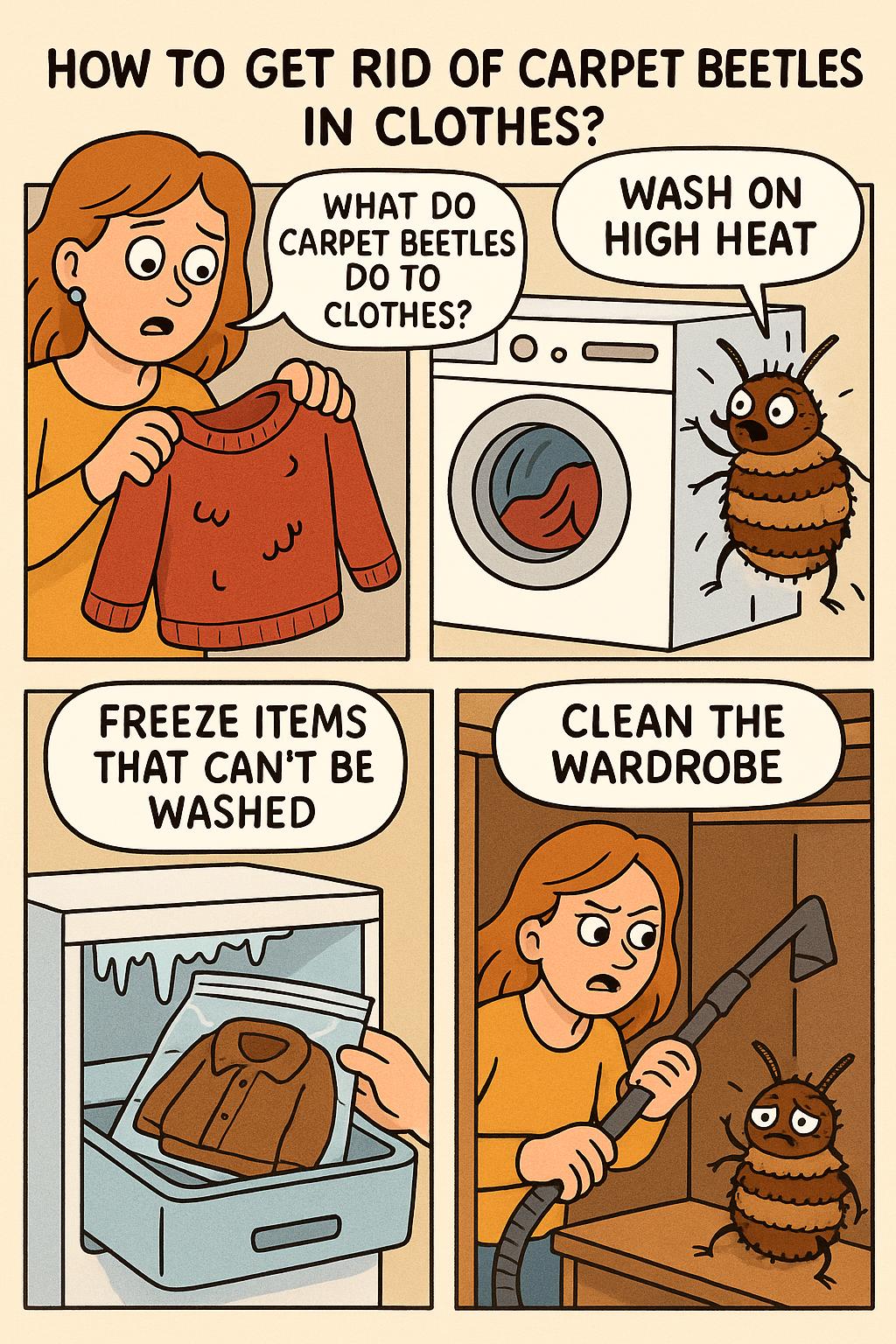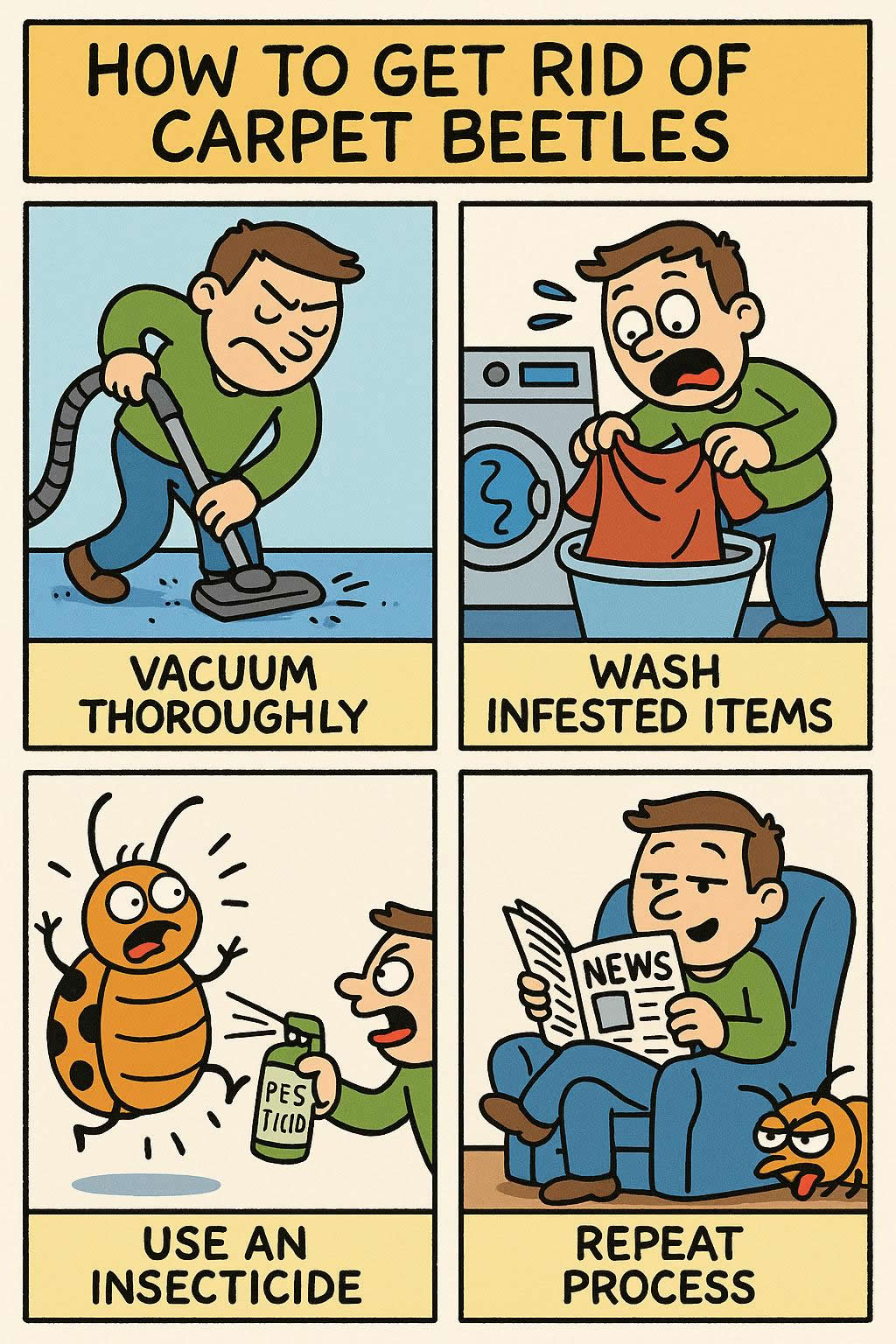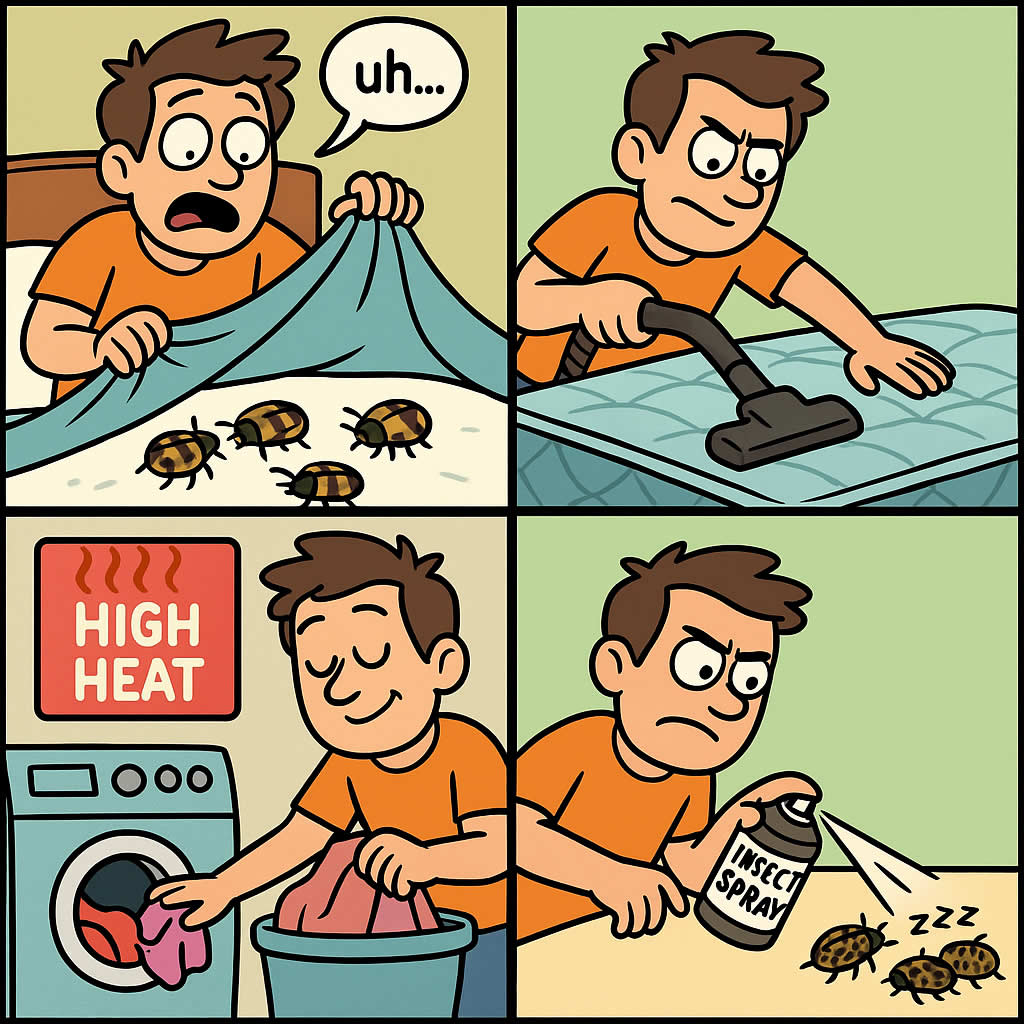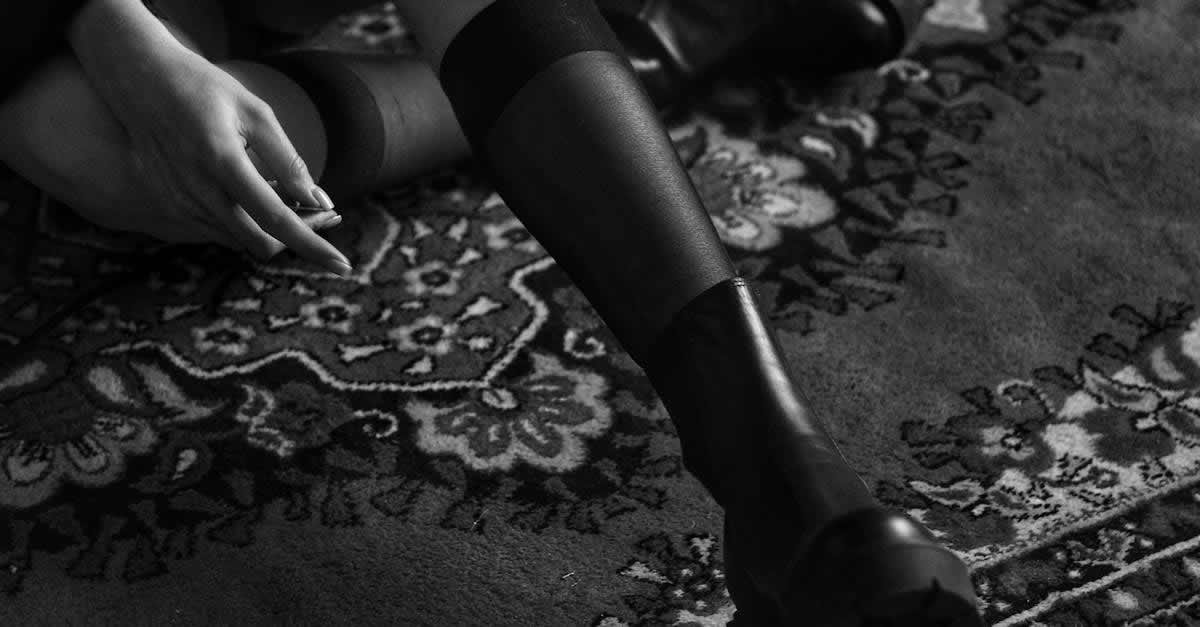Related Queries
ToggleYou’ve opened your wardrobe and noticed tiny holes in your favourite jumper. Or maybe you pulled out a jacket you haven’t worn in a while and found little brown shells on the fabric. It’s frustrating—and let’s be honest, a bit unsettling. If this sounds familiar, you’re probably dealing with carpet beetles.
Carpet beetles don’t just go for carpets. They love natural fibres—especially wool, silk, feathers, and leather. And clothes made from those materials can quickly become a target.
So let’s go through what’s happening, how to stop it, and how to make sure it doesn’t happen again. No complicated terms. Just honest, practical steps.
What do carpet beetles do to clothes?
Carpet beetles don’t chew through fabric the way moths do. It’s their larvae that cause the damage. These larvae feed on keratin, a protein found in natural fibres. That includes wool, cashmere, mohair, and sometimes cotton if it’s blended with animal-based fibres or stained with sweat, food, or skin oils.
When the larvae feed, they leave behind:
- Tiny irregular holes in fabric
- Thin, shed skins (light brown and flaky)
- Sand-like droppings, often near the base of wardrobes or shelves
You’ll often find damage in places where the fabric’s been folded, stored for a while, or tucked away without much air or light.
How do carpet beetles get into your clothes?
They usually come from outside. Carpet beetles fly. They’re small enough to fit through cracks, open windows, or gaps around doors. Once they’re in, they lay eggs in places with natural fibres—like your wardrobe, laundry basket, or clothes drawer.
Sometimes they come in on flowers, second-hand clothes, or furniture. If you’ve brought in vintage items or old storage boxes, that might be where they started.
The larvae hatch and stay near the egg site. They’re drawn to areas that don’t get disturbed—back corners of wardrobes, underneath piles of clothes, inside suitcases, or along the seams of fabric that’s been folded and left alone.
How do you know if carpet beetles are in your clothes?
You might not see them straight away. They’re good at hiding. But there are a few signs that make it clear.
- Holes in wool or silk clothing – especially if the item hasn’t been worn in a while.
- Cast skins – these are the shells the larvae shed as they grow. They look a bit like dandruff but are tougher and brown.
- Larvae – small, brown, bristly creatures about 4mm long. You’ll spot them crawling slowly across fabric or wood.
- Adult beetles – tiny, round insects (usually black or speckled) that hang around windows or lights. They’re not the ones eating your clothes, but they are laying eggs somewhere nearby.
If your damage matches these signs, it’s time to act. The longer you wait, the worse it can get.
Can you save clothes after carpet beetle damage?
You can, depending on how far the damage has gone. If the holes are small and you catch them early, a dry cleaner or tailor might be able to repair the item.
But if the fabric’s badly eaten, fraying, or thin in multiple spots, it might be beyond repair. Either way, you still need to treat the item—even if you plan to throw it away. If you don’t, you could end up spreading eggs or larvae to the rest of your clothes.
How do you get carpet beetles out of clothes?
This part’s important. Just brushing them off won’t do it. You’ve got to kill the larvae and eggs. That means heat or cold.
- Wash on high heat
If the fabric can handle it, wash it at 60°C or higher. This kills larvae and eggs in one go.
- Use a regular detergent.
- Don’t mix infested items with clean ones.
- Dry the clothes on high heat too, if your tumble dryer allows.
- Freeze items that can’t be washed
For delicate fabrics like silk or wool blends that can’t go through a hot wash:
- Seal the item in a plastic bag.
- Place it in the freezer for 72 hours.
- Take it out and let it return to room temperature while still sealed (to avoid condensation).
This kills larvae and eggs without damaging the fabric.
- Dry clean if needed
Dry cleaning can help with fragile or expensive items. Let the cleaner know what the issue is so they treat it properly.
What kills carpet beetles and larvae in wardrobes?
Once you’ve sorted the clothes, you’ll need to deal with the storage areas.
Clean the wardrobe
- Remove all clothes.
- Vacuum every corner, shelf, and crevice.
- Wipe down the interior with a 50/50 mix of white vinegar and water.
- Dry it fully with a cloth or leave the doors open for airflow.
Use insecticide or natural deterrents
If the infestation was bad, use a spray made for carpet beetles. Focus on the base of the wardrobe, behind the back panel if it’s loose, and along shelf joins.
If you’d rather avoid chemicals, try:
- Cedarwood oil or blocks
- Clove oil mixed with water as a spray
- Diatomaceous earth (sprinkle and vacuum after a few hours)
None of these work instantly, and they don’t replace cleaning. But they can help keep things clear once you’ve treated the main issue.
How long does it take to get rid of carpet beetles in clothes?
If you do everything properly—wash, clean, treat—you can get results in a week or two. But you’ll need to keep checking things for the next month or so. Eggs hatch over time. You might think it’s sorted, then find another larva a few weeks later.
So don’t stop after the first clean. Keep vacuuming regularly, check wardrobes weekly, and repeat treatments if you spot anything new.
Do mothballs work against carpet beetles?
Mothballs are meant for moths, not carpet beetles. They might offer some protection in sealed containers, but they’re not reliable. Plus, the fumes aren’t good for people or pets, and the smell can linger in clothes for months.
If you need long-term storage, go for sealed plastic containers and cedarwood products instead. They’re safer and more effective for beetles.
Can carpet beetles spread through your house?
Yes. They don’t stay in one spot. If larvae hatch in your wardrobe, they can crawl into nearby drawers, behind skirting boards, or under carpets. Adult beetles fly and can move from room to room.
That’s why it’s important to check other areas—not just the wardrobe where you first saw damage.
Look in:
- Under-bed storage boxes
- Old suitcases
- Drawers with woollen socks or scarves
- Coat cupboards
- Laundry baskets
You might only have one active spot, but it’s worth checking everything while you’re dealing with it.
How do you prevent carpet beetles from coming back?
Once you’ve got rid of them, you’ll want to make sure they don’t return. Here’s what helps:
- Vacuum regularly – especially in corners, under furniture, and along skirting boards.
- Keep clothes clean – larvae are more drawn to items with food, sweat, or oil on them.
- Use airtight storage – especially for seasonal items like coats, scarves, or suits.
- Check second-hand clothes – before you hang them in your wardrobe.
- Seal gaps – around windows, doors, vents, and roof spaces to stop adults flying in.
You don’t need to obsess over every corner. But a routine clean and quick check now and then will help you catch things before they grow into a problem.
Final thoughts – What to do now
If you’ve found carpet beetles in your clothes, don’t ignore it. The damage can spread fast—and some fabrics can’t be replaced.
Take a few hours to:
- Go through your wardrobe
- Separate what’s affected
- Wash, freeze, or dry clean everything you can
- Clean the storage areas
- Check nearby spaces for signs of larvae
Then stay on top of it. The more regularly you clean, air out clothes, and check hidden spots, the less chance they’ll come back.
It’s not about doing everything at once. It’s about doing it right—and doing it early. That way, you’ll protect your clothes and your home from a pest that often gets missed until the damage is already done.
Pest Control Gloucestershire – Pest Control Harrowden – Pest Control Lower Caldecote







